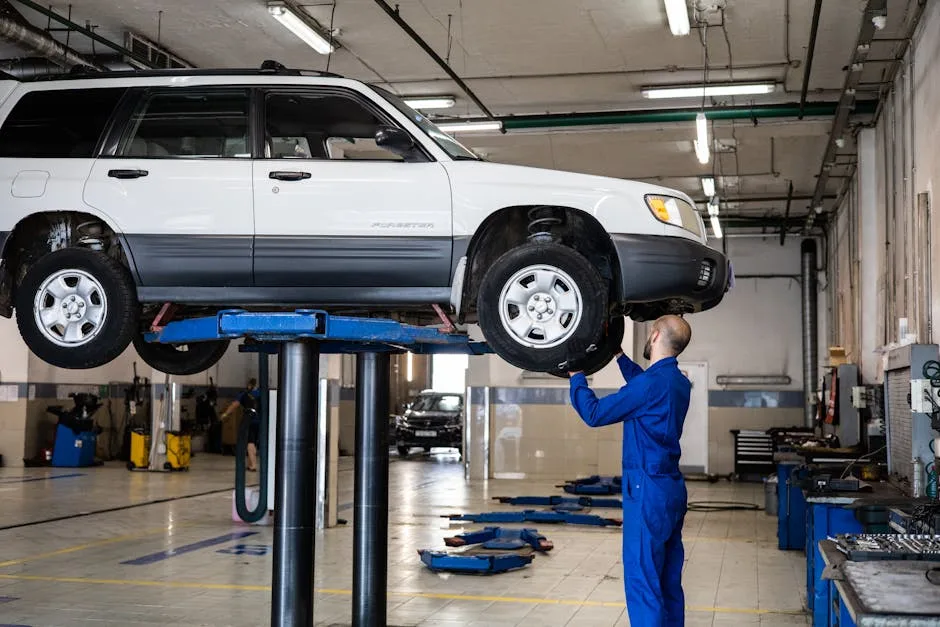
The European Union is considering a controversial proposal to mandate annual technical inspections for vehicles over 10 years old, a move that would affect approximately 22.7 million cars in Germany alone. The plan, criticized by the Alternative for Germany (AfD) party as excessive bureaucracy, has sparked a heated debate about road safety versus financial burden on vehicle owners.
Proposal Details and Immediate Impact
The EU Commission’s draft regulation would require vehicles aged 10 years or older to undergo annual TÜV inspections, a significant increase from the current biennial requirement in Germany. According to industry estimates, this change would generate approximately €3 billion annually in inspection costs nationwide. In Brandenburg specifically, where 51% of vehicles fall into this category, drivers would face an additional €112.5 million in collective expenses at an estimated €150 per inspection.
The proposal comes amid broader EU regulatory actions across multiple sectors, including recent fines against tech companies Apple and Meta for competition law violations. Automotive industry analysts suggest this move aligns with the EU’s push toward newer, cleaner vehicles as part of its environmental agenda.
Political and Industry Reactions
AfD EU parliament member Siegbert Droese has been particularly vocal in opposition, stating:
“Gerade diejenigen, die sich kein neues Auto leisten können, werden durch diese Maßnahme bestraft” (“Those who can’t afford a new car will be punished by this measure”).
The party frames the proposal as disproportionate regulation that would primarily impact lower-income households in rural areas where older vehicles are more common.
Technical inspection organizations are divided on the issue. TÜV Süd CEO Jürgen Wolz supports stricter checks, citing Dekra study data showing older vehicles are involved in 60% of accidents and have a 24% initial inspection failure rate. However, automobile clubs ADAC and AvD oppose the measure, arguing there’s no proven correlation between vehicle age and accident causation according to GDV Insurance Association data.
Economic and Safety Considerations
The financial implications vary significantly by region. While urban areas with newer vehicle fleets would see minimal impact, rural communities with higher concentrations of older cars would bear disproportionate costs. The MAZ Online reports Brandenburg’s 750,000 affected vehicles represent a particular burden for its residents.
Safety statistics present conflicting narratives. While TÜV emphasizes higher defect rates in older vehicles, opponents note that most accidents result from driver error rather than mechanical failure. The debate mirrors broader EU policy tensions between regulatory oversight and economic practicality.
Broader Regulatory Context
This automotive proposal follows a pattern of aggressive EU regulation across sectors. Recent actions include €500 million and €200 million fines against Apple and Meta respectively for competition violations, as reported by SRF. Simultaneously, the EU is developing incentives for electric vehicle adoption, with Chancellor Scholz proposing EU-wide subsidies to compete with Chinese and American manufacturers.
The automotive inspection debate also intersects with ongoing vehicle safety concerns, exemplified by Kia’s recent global recall of 600,000 vehicles for fire risks. These parallel developments illustrate the complex landscape of vehicle regulation, where safety, economics, and environmental policy frequently collide.
Future Implications
As the proposal moves through EU legislative processes, stakeholders anticipate intense negotiations. The outcome could set precedents for how aging vehicle fleets are managed across Europe, particularly as the transition to electric vehicles accelerates. Industry observers suggest the final regulation may include compromises, such as phased implementation or exemptions for well-maintained older vehicles.
The debate highlights fundamental questions about balancing public safety with economic accessibility in transportation policy. With millions of vehicles and billions in costs at stake, the final decision will have tangible consequences for European drivers and the automotive industry.
References
- “Jedes Jahr Zwangs-Tüv? AfD kritisiert EU-Kommissionspläne für ältere Autos,” Junge Freiheit, 2025. [Online]. Available: https://jungefreiheit.de/wissen/natur-und-technik/2025/millionen-fahrzeuge-betroffen-afd-kritisiert-plaene-der-eu-kommission-fuer-aeltere-autos/
- “EU-Plan: Ältere Autos sollen jedes Jahr zum Tüv – Millionenkosten für Brandenburg,” MAZ Online, 2025. [Online]. Available: https://www.maz-online.de/brandenburg/eu-plan-aeltere-autos-sollen-jedes-jahr-zum-tuev-millionenkosten-fuer-brandenburg-STS6ILKNTRGKRKW3QDWHHS3NLY.html
- “Jährliche TÜV-Prüfung: Diese Autos sind betroffen,” Antenne Bayern, 2025. [Online]. Available: https://www.antenne.de/experten-tipps/verkehr-und-mobilitaet/jaehrliche-tuev-pruefung-diese-autos-sind-betroffen
- “EU-Kommission verhängt Millionenstrafen gegen Apple und Meta,” SRF, 2025. [Online]. Available: https://www.srf.ch/news/wirtschaft/wettbewerbsrecht-verstoss-eu-kommission-verhaengt-millionenstrafen-gegen-apple-und-meta
- “Vorschlag für EU-weite Kaufanreize für E-Fahrzeuge in Arbeit,” ecomento.de, 2025. [Online]. Available: https://ecomento.de/2025/01/23/vorschlag-fuer-eu-weite-kaufanreize-fuer-e-fahrzeuge-in-arbeit/
- “Rückruf für600000 Fahrzeuge: Kia-Modelle betroffen,” ProSieben, 2025. [Online]. Available: https://www.prosieben.de/serien/newstime/news/rueckruf-fuer600000-fahrzeuge-kia-modelle-betroffen-482301



